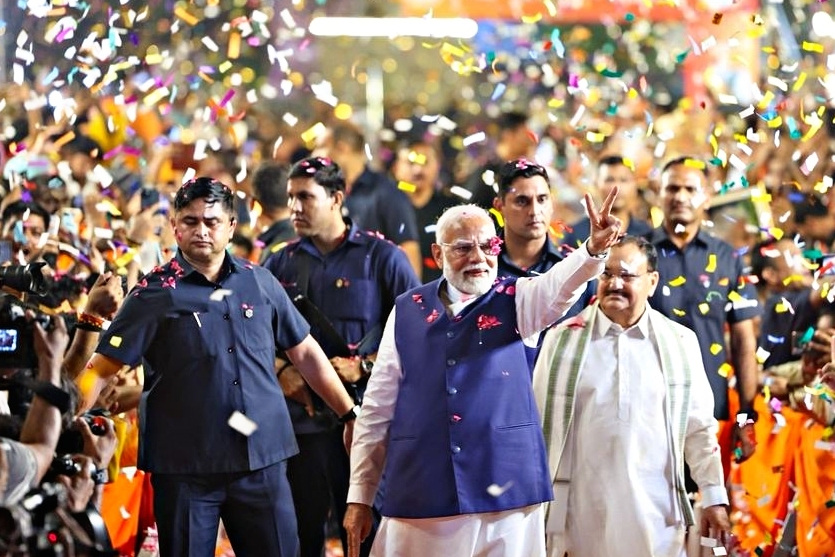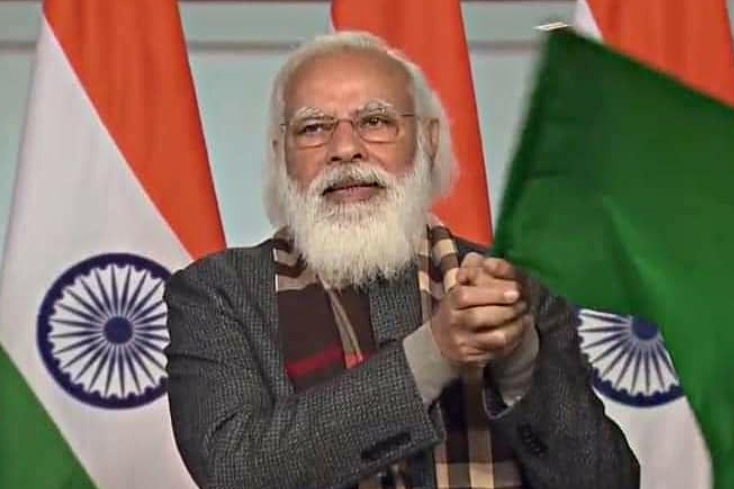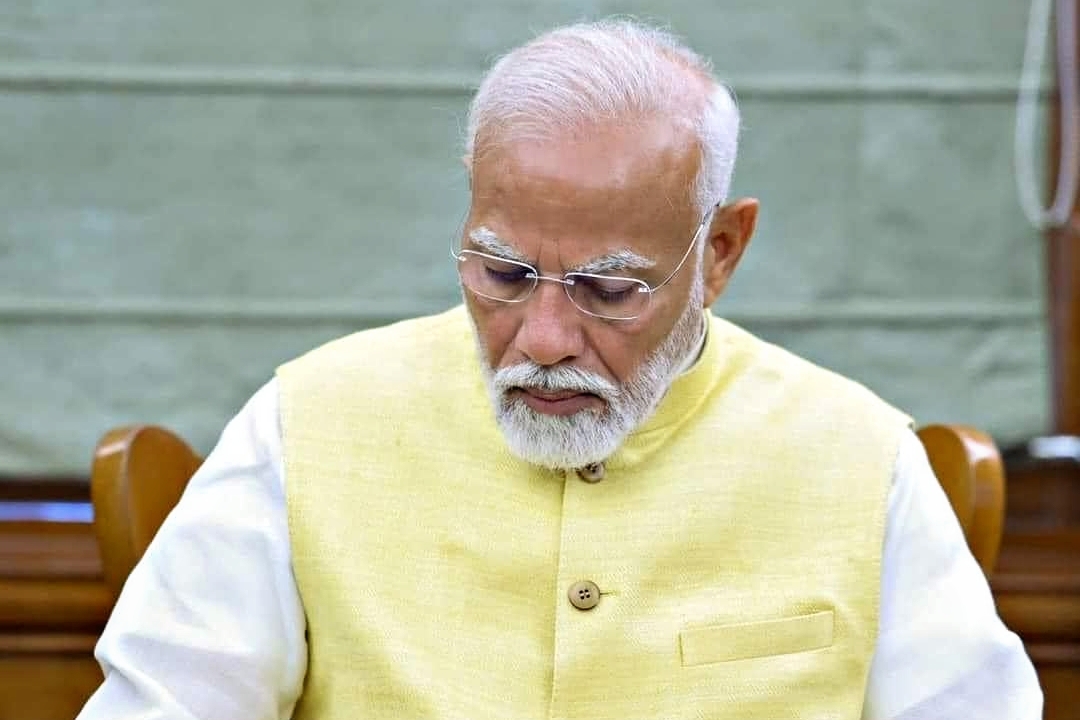Narendra Modi, the 14th Prime Minister of India, is one of the most influential and dynamic leaders in modern Indian history. Born into humble beginnings, Narendra Modi’s life story is a testament to determination, vision, and unwavering commitment to public service. As the architect of numerous transformative initiatives, he has redefined India’s governance and global standing. This Narendra Modi biography explores his life, political journey, and the impact he has made on the nation.
Narendra Modi biography – Early Life and Childhood
Narendra Modi was born on September 17, 1950, in Vadnagar, a small town in Gujarat, India. He was the third of six children in a modest family. His father, Damodardas Mulchand Modi, ran a tea stall, while his mother, Heeraben Modi, managed the household.
From an early age, Narendra Modi exhibited a keen sense of responsibility and discipline. He often helped his father sell tea at the railway station and later at a bus terminal. These formative years instilled in him a deep understanding of grassroots issues and the struggles faced by ordinary Indians.
Modi’s passion for serving the nation was evident even as a child. He was a keen debater, a voracious reader, and showed an early interest in spirituality and patriotism. His modest upbringing laid the foundation for his empathetic approach to leadership, which is a hallmark of his political career.
Early Influences and Education

Narendra Modi’s association with the Rashtriya Swayamsevak Sangh (RSS) began during his teenage years. The RSS, a Hindu nationalist organization, played a pivotal role in shaping his ideological and leadership skills. Modi formally joined the RSS as a pracharak (campaigner) in 1971, dedicating his life to social service and organizational work.
His education was unconventional but impactful. Modi completed his higher secondary education in Vadnagar and later earned a Bachelor of Arts degree in Political Science from the University of Delhi. Subsequently, he pursued a Master’s degree in Political Science from Gujarat University. His academic background in politics and governance contributed significantly to his later success as a leader.
The Early Political Career of Narendra Modi Biography

Narendra Modi’s political career began with his active involvement in the Bharatiya Janata Party (BJP). His organizational skills and dedication quickly earned him recognition within the party. During the Emergency in 1975-77, imposed by then-Prime Minister Indira Gandhi, Modi played a crucial role in organizing resistance and spreading awareness, operating from the underground to avoid arrest.
In the 1980s, Modi’s strategic acumen and leadership abilities led to his appointment as the BJP’s General Secretary in Gujarat. He was instrumental in strengthening the party’s grassroots network and expanding its support base in the state. His work ethic, clarity of thought, and ability to connect with people became his defining traits.
Rise to Prominence in Gujarat
The turning point in Narendra Modi’s political career came in 2001 when he was appointed as the Chief Minister of Gujarat. At the time, Gujarat was recovering from a devastating earthquake. Modi’s leadership during this crisis earned him admiration for his ability to implement swift and effective relief measures.
As Chief Minister, Narendra Modi introduced policies focused on economic growth, infrastructure development, and governance reforms. His vision transformed Gujarat into an industrial hub and a model of development. Key initiatives during his tenure include:
- Vibrant Gujarat Summit:
Modi launched this platform to attract investments and showcase Gujarat as a business-friendly state. It became a benchmark for economic development in India. - Jyotigram Yojana:
This initiative aimed to provide 24/7 electricity to rural areas, revolutionizing agriculture and improving the quality of life for millions. - Urban and Rural Development:
Modi’s policies emphasized infrastructure growth, urban planning, and rural development, creating a balanced approach to progress.
Under his leadership, Gujarat experienced robust economic growth, though his tenure was not without controversies, including the 2002 Gujarat riots. However, Modi’s political acumen and focus on development ensured his continued popularity in the state.
Narendra Modi’s Rise to National Leadership

Narendra Modi’s success as Gujarat’s Chief Minister caught the attention of the BJP’s central leadership. In 2013, he was named the party’s Prime Ministerial candidate for the 2014 General Elections. Modi’s campaign focused on themes of development, governance, and anti-corruption, resonating with a populace yearning for change.
The 2014 General Elections marked a watershed moment in Indian politics. The BJP, under Modi’s leadership, secured a historic victory, winning 282 seats, the first time in three decades that a single party achieved a majority. Narendra Modi became the 14th Prime Minister of India on May 26, 2014.
Key Achievements as Prime Minister Narendra Modi
1. Economic Reforms
Narendra Modi’s tenure as Prime Minister has been marked by significant economic reforms aimed at transforming India into a global economic powerhouse. Key initiatives include:
- Make in India:
Launched to boost manufacturing and attract foreign investment, this program aims to position India as a global manufacturing hub. - Goods and Services Tax (GST):
Modi’s government implemented GST, a landmark tax reform that streamlined India’s complex tax structure and promoted economic efficiency. - Demonetization:
In 2016, Modi announced the demonetization of high-value currency notes to combat black money, counterfeit currency, and corruption.
2. Digital India
The Narendra Modi biography would be incomplete without mentioning the Digital India initiative. This program seeks to harness technology to improve governance, enhance digital connectivity, and promote a knowledge-based economy. Key achievements under Digital India include:
- Expansion of broadband connectivity to rural areas.
- Increased access to government services through digital platforms.
- Promotion of digital payments and financial inclusion.
3. Social Welfare Programs
Modi’s tenure has prioritized social welfare, focusing on empowering marginalized communities. Notable initiatives include:
- Jan Dhan Yojana:
A financial inclusion program that brought millions of Indians into the formal banking system. - Swachh Bharat Abhiyan:
This nationwide cleanliness drive aimed to eliminate open defecation and promote hygiene. - Ujjwala Yojana:
Providing free LPG connections to women in low-income households, addressing health and environmental concerns.
4. Infrastructure Development
Narendra Modi’s government has focused extensively on infrastructure development, including:
- The construction of highways, railways, and airports.
- The Sagarmala and Bharatmala projects, aimed at enhancing connectivity.
- Promotion of renewable energy, particularly solar power.
5. Foreign Policy
Modi has redefined India’s foreign policy, enhancing its global stature. His emphasis on diplomacy, economic partnerships, and regional cooperation has strengthened India’s position on the world stage. Key achievements include:
- Strengthening ties with major powers like the US, Japan, and Russia.
- Initiating the International Solar Alliance.
- Promoting the “Act East” policy to enhance relations with Southeast Asian nations.
Second Term as Prime Minister Narendra Modi

In 2019, Narendra Modi led the BJP to another landslide victory, securing 303 seats in the General Elections. His second term has focused on bold and transformative measures, including:
- Abrogation of Article 370:
Modi’s government revoked the special status of Jammu and Kashmir, integrating the region fully into India. - Citizenship Amendment Act (CAA):
This controversial law provided a pathway to citizenship for persecuted minorities from neighboring countries. - Aatmanirbhar Bharat (Self-Reliant India):
Launched to promote self-sufficiency in manufacturing and reduce dependency on imports.
Challenges and Criticism
While Narendra Modi’s leadership has been widely praised, it has also faced criticism on several fronts. His economic policies, such as demonetization and GST implementation, have been polarizing. Additionally, issues like rising communal tensions, unemployment, and the handling of the COVID-19 pandemic have drawn scrutiny.
Despite these challenges, Modi’s popularity remains robust, largely due to his ability to connect with people and articulate a vision for India’s future.
Personal Life and Values

Narendra Modi has remained a deeply spiritual and disciplined individual throughout his life. A vegetarian and teetotaler, he begins his day with yoga and meditation. Modi’s commitment to public service is reflected in his decision to remain single, dedicating his life entirely to the nation.
His speeches and writings often reflect his belief in the principles of hard work, self-reliance, and national pride. These values have inspired millions of Indians to strive for excellence and contribute to the country’s progress.
Conclusion
This Narendra Modi biography highlights the journey of a man who rose from humble beginnings to become one of the most influential leaders in India’s history. His visionary policies, bold decisions, and tireless dedication have reshaped India’s political and economic landscape.
Narendra Modi’s life story is a testament to the power of perseverance and determination. As he continues to lead India on the path of development and global prominence, his biography serves as an inspiration for generations to come. Whether admired or critiqued, Narendra Modi’s impact on India and the world is undeniable, making him a pivotal figure in the 21st century.

